SINCE 1967
Welcome to GC Museum
A Journey through GC’s Magnificent Struggle to Protect and Improve Public Health
SCROLL
Opening a New Chapter in the History of Biotechnology
1967~1979
GC was first established as Sudo Microorganism Medical Supplies Company in 1967. Two years later, it became a pharmaceutical manufacturer.
The company’s founder had a distinct and clear vision:
to protect Korean public health by focusing on the production of essential drugs difficult to make. This mission guided the company’s expansion into plasma derivatives and vaccines.
GC blazed new trails in Korea through successful production of plasma derivatives, including plasmanate and albumin, as well as basic vaccines, including one against typhus.
Pioneering new paths never walked by others was a herculean challenge.
The success of Urokinase, however, finally gave the company the much-needed boost for growth, enabling it further to develop and produce other plasma derivatives and vaccines.
-
1967
- · Established as Sudo Microorganism Medical Supplies Company
-
1969
- · Reorganized into Geukdong Pharmaceuticals
- · Obtained license to manufacture pharmaceuticals for humans
-
1970
- · Entered technological alliance with Cutter Lab (USA)
- · Entered technological alliance with Midori Juji (Japan)
-
1971
- · Completed construction of a microorganism derivative plant
- · Renamed Green Cross Incorporated
- · Obtained government approval for albumin, plasmanate, and gamma globulin
- · Completed construction of first blood plasma fractionation plant
-
1972
- · Began R&D on hepatitis-B vaccine
-
1973
- · Published inaugural issue of Green Cross Medical Proceedings
- · Entered partnership agreement with Midori Juji on manufacturing Urokinase
- · Completed construction of Urokinase plant
-
1974
- · Obtained government approval for anti-hemophilic factor (AHF)
-
1975
- · Obtained government approval for Widal antigen
-
1977
- · Obtained government approval for finished Urokinase product
-
1978
- · Underwent initial public offering
-
1979
- · Exceeded USD 10 million in exports
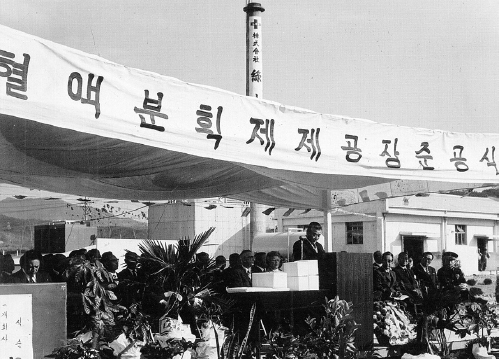
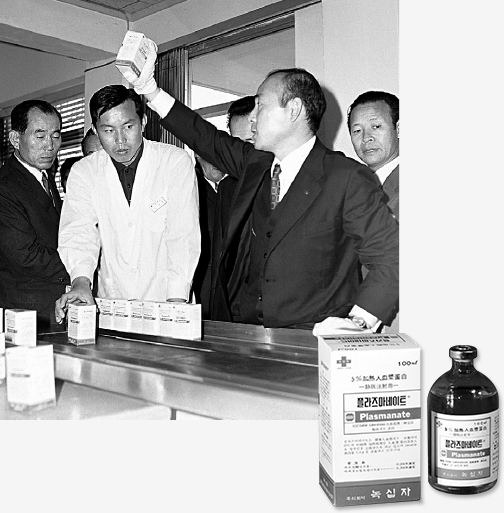
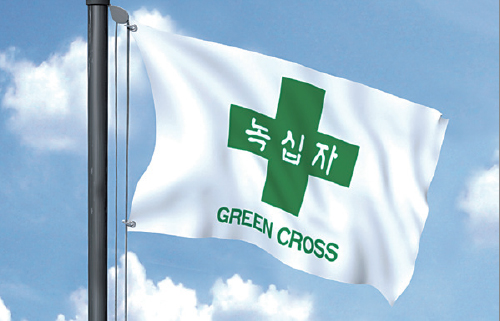

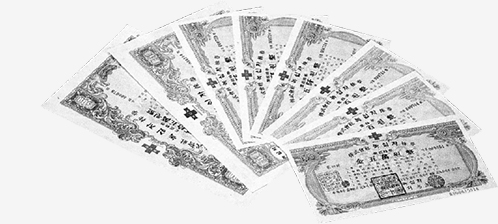
Consolidating Leadership on the Vaccine Market
1980~1994
The appointment of Huh Young-sup as the company’s new CEO led to reorganization of the company’s management system and relocation of its headquarters, paving the way for the company’s growth.
GC achieved significant successes in R&D during this period as well, developing and launching a series of innovative plasma derivatives and vaccines,
including Hepavax-B, Hantavax, Suduvax, Interferon, an AIDS testing kit, and an intravenous immunoglobulin (IVIG). Hepavax-B,
in particular, made Green Cross a household name in Korea and gave the company a reputation as a leading developer of vaccines.
Having opened a corporate research center (GC Pharma R&D Center), the company began to invest the profits it earned from Hepavax-B in research on basic medicine
through a newly-established GC Research Center
(now Mogam Institute of Biomedical Research), thus preparing for the future.
-
1980
- · Launched company newsletter (Salon and Well)
- · Completed new headquarters at Seocho-dong, Seoul
-
1981
- · Established GC Pharma R&D Center
-
1982
- · Established Green Cross Bio Science Lab(now GC Labs)
- · Obtained government approval for Interferon (ointment) and eye drops
- · Obtained government approval for IVIG
- · Completed construction of hepatitis-B vaccine plant
-
1983
- · Became third pharmaceutical company in the world to obtain government approval for hepatitis-B vaccine (Hepavax-B)
-
1984
- · Introduced company anthem
- · Enactment of a new Order of Merit
- · Established Green Cross Research Center (now Mogam Institute of Biomedical Research)
-
1986
- · Completed construction of
Mogam Institute of Biomedical Research
- · Completed construction of
-
1987
- · Designated as KGMP-fitting company
-
1989
- · Mogam Institute of Biomedical Research
designated as a WHO research partner organization
- · Mogam Institute of Biomedical Research
-
1990
- · Became first pharmaceutical company in the world to obtain government approval for vaccine against hemorrhagic fever with renal syndrome (Hantavax)
-
1991
- · Established Korea Hemophilia Foundation
- · Introduced Green Cross Medal of Honor
- · Established Green Cross Medical Foundation (now GC Labs)
- · Established Green Cross Medical Foundation’s Human Diagnostics Center (now GC i-Med)
- · Exceeded KRW 100 billion in annual revenue
-
1992
- · Launched organizational culture campaign,
“Greenpia Movement” - · Launched Green Friends Association
- · Launched organizational culture campaign,
-
1993
- · Became second in the world to obtain government approval for varicella vaccine (Suduvax)
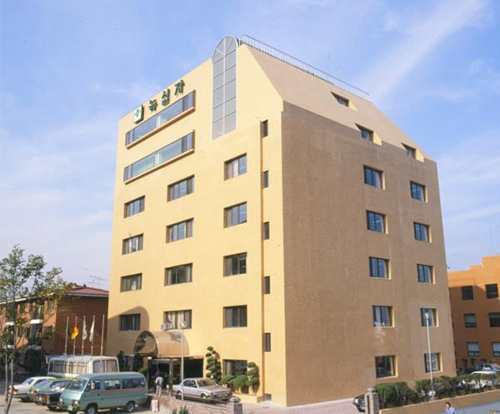
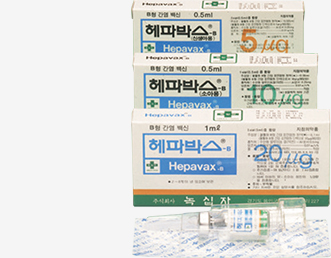
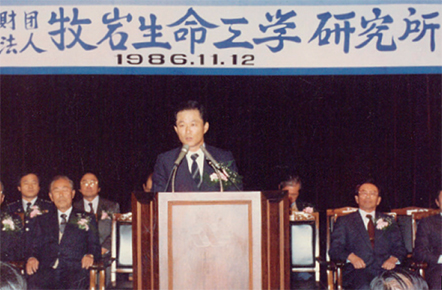
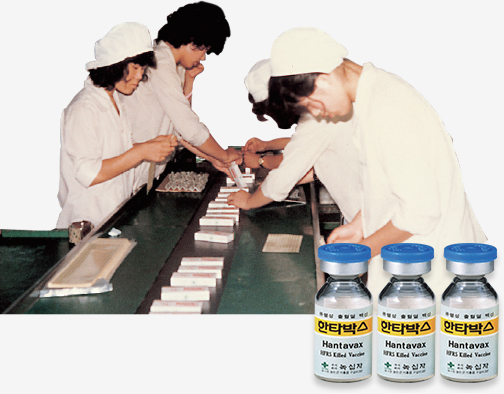
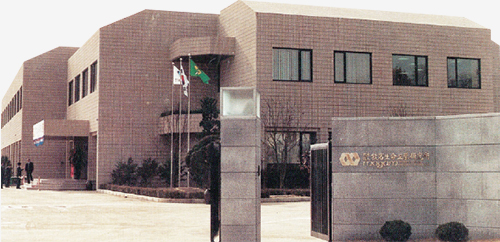
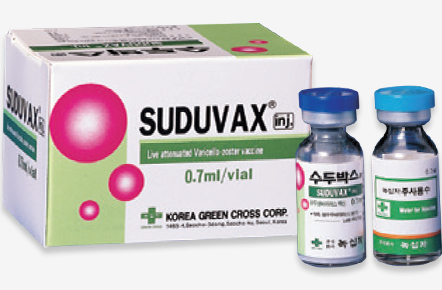
Adventures and Innovations toward Enhancing the Company’s Value
1995~2003
Questioning the prevailing opinion that manufacturing was the only key to growth, GC began to look for ways to innovate itself and maximize its value by actively embracing the changing times.
GC set out on the ambitious task of transforming itself for future growth by dividing its expansive organization into independent companies,
forming partnerships with leading companies worldwide, and introducing a holding company system.
These sweeping changes reflected the company’s aspiration toward evolving from a mere pharmaceutical manufacturer into a provider of a comprehensive range of healthcare solutions.
The company continued with bold projects during this period, including the launching of life insurance products and the transfer of its vaccine business.
-
1995
- · Declared GREEN CROSS 2000, new company vision
- · Established Anhui Green Cross Bio Products Limited in China
-
1997
- · Exchanged memorandum of understanding on partnership for creation of a Urokinase plant in North Korea with Gwangmyeongseong Business Association
- · Completed construction of Anhui Green Cross plant
-
1998
- · Began construction of Urokinase plant in
Pyongyang, North Korea
- · Began construction of Urokinase plant in
-
1999
- · Completed construction of Mogam Building
- · Exceeded USD 50 million in pharmaceutical exports
-
2000
- · Completed construction of Jeongseong Green Cross Pharmaceutical Center and plant
- · Transferred vaccine business to Line Biotech
-
2001
- · Became first pharmaceutical company in
Korea to adopt holding company system - · Established Green Cross EM (now GCEM)
- · Acquired Sang-A Pharmaceuticals
- · Became first pharmaceutical company in
-
2003
- · Sang-A Pharmaceuticals becomes Green Cross Sang-A
- · Acquired Gyeongnam Pharmaceuticals through
Green Cross Sang-A - · Established Green Cross MS (now GCMS)
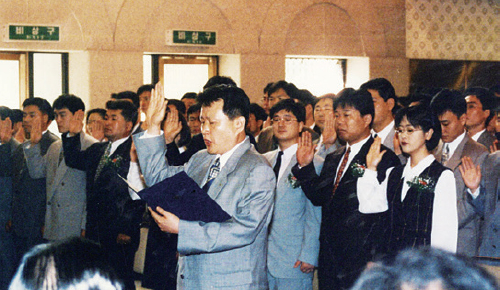

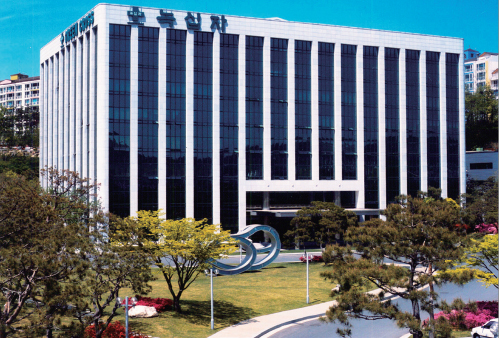
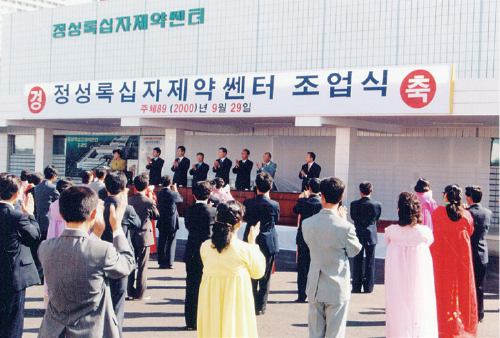
Rebuilding Intrinsic Value and Core Capabilitiess
2004~2009
In acknowledgement of the growing criticism over the reorganization-through-division strategy,
GC abandoned it and began to focus on rebuilding its core capabilities and intrinsic value.
While maintaining the holding company system, GC underwent reorganization, now with pharmaceuticals and healthcare services as its two new main pillars.
The company acquired its vaccine business back, developed new production infrastructure in Ochang and Hwasun, and strengthened its research facilities and workforces.
Under “Green Cross Care” declared as a new company vision, GC began to bring executives and employees together
under the new objective of providing a comprehensive scope of healthcare solutions from cradle to grave.
Just as the company set out to strengthen its core capabilities and prepare to take the next leap forward, the H1N1 pandemic swept around the world.
GC successfully developed new vaccines against the seasonal flu as well as H1N1, helping the Korean nation effectively cope with the flu pandemic during these troubling times.
-
2004
- · Established GC Japan Bio (now GC Wellbeing)
- · Green Cross Inc. becomes Green Cross Holdings Incorporated
- · Green Cross Sang-A becomes Green Cross Incorporated
- · Re-commenced vaccine business after signing agreement with Green Cross Vaccines
- · Launched Green Cross Social Volunteers Corps
- · Acquired Nova Medica (now GC Healthcare)
-
2005
- · Designated by the Korean government as final participant in government project on developing production infrastructure for raw materials for flu vaccines
- · Established Mogam Science Scholarship Foundation
- · Green Cross Care vision declared
- · Began construction of Ochang plant
-
2006
- · Began construction of Hwasun plant
-
2007
- · Established Invacfarm (now GC Invacfarm)
-
2008
- · Became fourth in the world to obtain government approval for recombinant hemophilia-A treatment (GreenGene)
-
2009
- · Completed construction of Ochang plant
- · Completed construction of Hwasun plant
- · Obtained government approval for GreenFlu-S (H1N1 vaccine)
- · Obtained government approval for GCFLU (trivalent flu vaccine)
- · Established GCAM
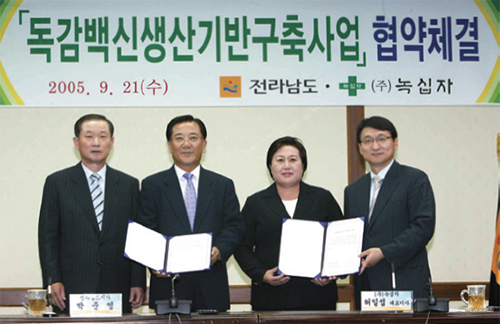
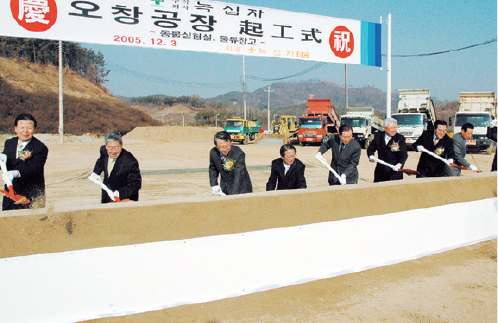
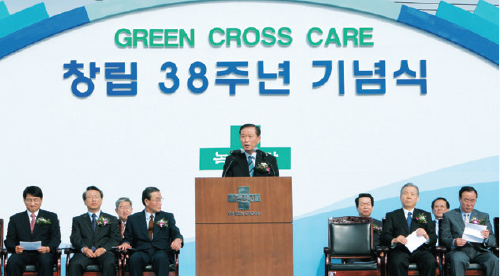
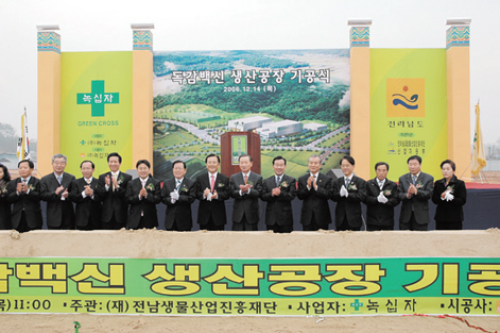
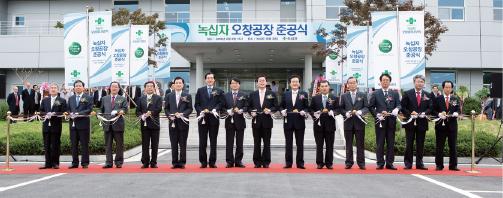
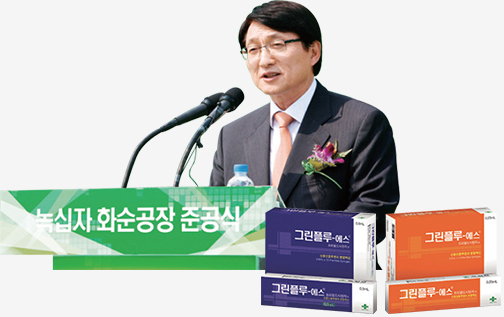
Leaping into the Global Market
2010-present
GC has been mobilizing its resources and capabilities over the past several years toward becoming a major global player.
The company has sought to achieve a paradigm shift in all aspects of management, including executive and employee mindsets and approach to work, production systems,
and R&D infrastructure, under a newly declared vision and a mid- to long-term strategy for company-wide innovation.
In particular, Green Cross sought to enter the North American market, establishing plasma collection centers in the United States and a blood plasma fractionation plant in Canada.
GC products, including VIG-SN and GreenGene-F, are now preparing for release on the American and Chinese markets.
The R&D pipeline is also expanding to upgrade existing products and create new ones. The company is producing inspiring results with its cell therapy research. The construction of a new cell research center,
to serve as the forward base for GC’ future growth, is now in its final phase. We will actively enter the global market and carry out CMO business with integrated completion officer with global GMP facilities.
-
2010
- · Green Flu-S passed WHO prequalification
- · Exported USD 6 million worth of GCFLU to PAHO
- · Established GCHK
- · Became third in the world to obtain government approval for third-generation recombinant hemophilia-A treatment (GreenGene-F)
- · Obtained government approval for IVIG-SN
-
2011
- · GCFLU became fourth in the world to pass WHO prequalification as seasonal flu vaccine
- · Obtained government approval for Shinbaro
(arthritis treatment) - · Established GC LabCell
-
2012
- · Certified by Ministry of Health and Welfare as
“Innovative Pharmaceutical Company” - · Declared new vision, “Leader in the Global Health Industry”
- · Became second in the world to obtain government approval for Hunter syndrome treatment (Hunterase)
- · Acquired Innocell (now GC Cell), specializing in cell therapy for cancer patients
- · Established Anhui Gelinker Drugs Distribution Limited as wholesale pharmaceutical distributor in China
- · Certified by Ministry of Health and Welfare as
-
2013
- · Hunterase designated by US FDA as rare disease drug
- · Began construction of blood plasma fractionation plant in Thailand (with Thai Red Cross)
- · Established Genome(now GC Genome)
- · Completed construction of GC Pharma R&D Center
- · Exceeded USD 100 million in exports
-
2014
- · Produced over 100 million doses of GCFLU
- · Won USD 100 Million Export Tower Award
(based on export performance from July 2013 to June 2014) - · GCMS listed on KOSDAQ
- · Became first Korean pharmaceutical company to exceed USD 200 million in exports
- · Established GCBT
- · Established GCNA
- · Obtained government approval for chemotherapy supplement (Neulapeg)
- · Exceeded KRW 1 trillion in annual revenue
(Green Cross Holdings)
-
2015
- · Acquired Theragem Medisys (now GC Medis)
- · Became fourth in the world to obtain government approval for quadrivalent seasonal flu vaccine (GCFLU Quadrivalent)
- · Became first in Korea to obtain government approval for H5N1 (avian flu) vaccine (GCFLU H5N1)
- · Exceeded KRW 1 trillion in annual revenue
(Green Cross Incorporated) - · Began construction of blood plasma fractionation plant in Canada (GCBT)
-
2016
- · Declared “Commitment to Compliance with Fair Trade Regulations”
- · GC LabCell listed on KOSDAQ
- · GCFLU Quadrivalent became second in the world to pass WHO prequalification
- · Established GC LabTech
-
2017
- · Held ceremony in celebration of 50th anniversary of the company’s foundation
- · Completed construction of GCBT plant in Canada
-
2018
- · Officially announced new corporate identity
- · Name changed to “GC”
- · Construction of the Cell Center completed
-
2019
- · 2019 First Korean pharmaceutical company to produce over 200 million flu vaccine doses
-
2020
- · Construction of the W&FF Plant completed
- · Next Generation Chicken Head Vaccine BARYCELA Acquired
- · Hunter Raze Authorizes China's First Hunter Syndrome Treatment
-
2021
- · Hunterase ICV Authorizes Japan to Treat Severe Hunter Syndrome
- · Greengene F obtains marketing approval in China for a recombinant treatment for hemophilia
-
2022
- · GC - GC Cell acquires BioCentriq in US
- · GC Genome awarded Good Clinical Laboratory Practice(GCLP) status
-
2023
- · GC BioPharma Established Corporate Compliance Management System
- · GC BioPharma Received WHO Pre-Qualification for BARYCELA
- · GC BioPharma Exceeded 300 million doses of flu vaccine production
- · GC BioPharma Received WHO Pre-Qualification for Filling and Finish Plant in Ochang
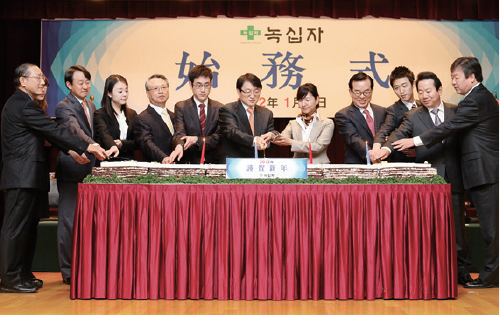
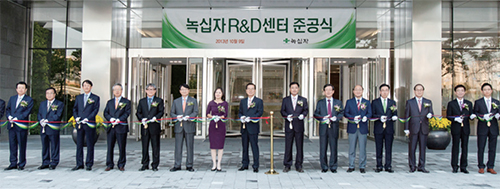
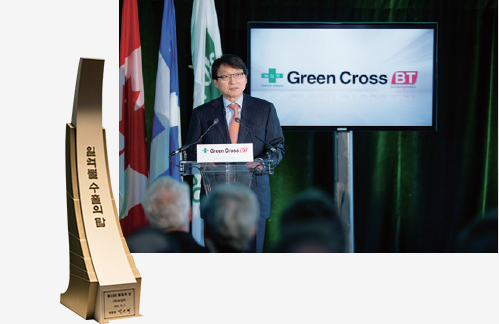
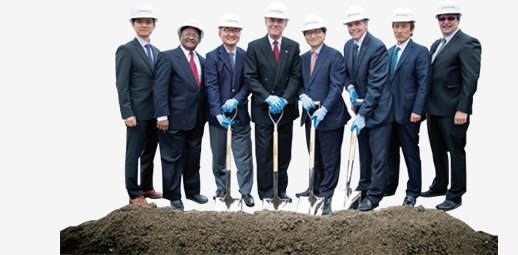
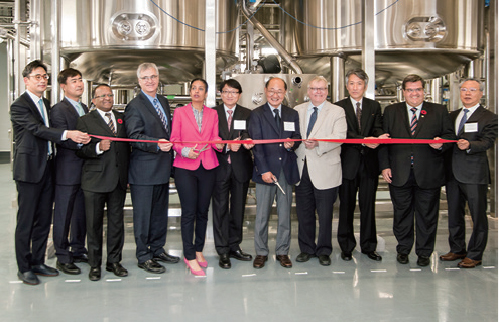
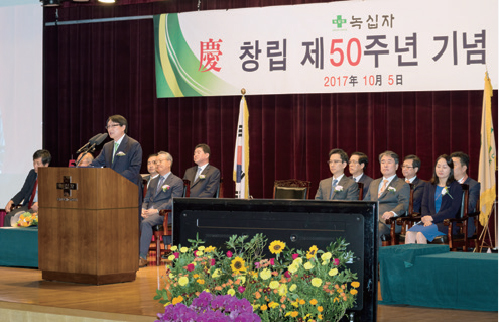
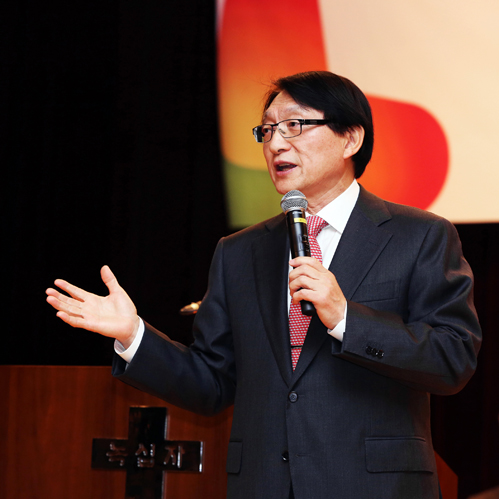
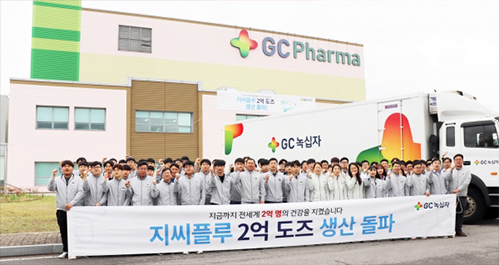
0106
